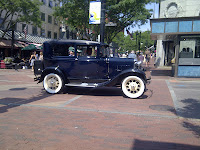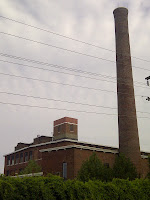Xterra World Championships
Official result
A big thank you to George "Boo" Bryant my coach, friend and mentor, Alan Pocock, Fred Milller, Patrick Herron for getting me to this race. My sponsors, Cadence Cyclery, Orange Seal Cycling, Elite Performance Chiropractors, Jon Poe at Peak Physical Therapy
Yet another race morning, although this time Its, 2012 Xterra World Championships. The top athletes in the sport will come from far and wide to test themselves against the natural elements and other athletes .
Today Ive awaken to the sound of a rooster echoing in the distance. The realization that im on Maui, Hawaii island is surreal and in a few hours ill embark on the toughest race of the season. Its all come down to this one point, the arrow head had best be sharp because the war begins today. Last night was a late night with a tsunami warning issued because of a 7.7 earth quake off the coast of Canada B.C. Fortunately my home stay is geographically positioned high enough not to be in any form of danger. Although it would become the safe haven for many others.
My morning routine has not changed, I brew a pot of coffee, cook up my steel cut oatmeal, add some good magic, a tbls of Almond butter, cut a banana and throw in some other secret ingredients and then wait patiently for the "storm".


Now at the race venue getting body marked and setting up my transition with my support crew and new friend Hiilani, a Scarlet Macaw. MORE PHOTOS HERE
There is a window of opportunity before the start now to get in a quick warm up and send blood flow to the muscles that will serve as the mechanics for the days work. The beach is riddled with a contrast of moving bodies, out in the ocean now and look back to find a tree that I will use to sight my landing upon my return to shore. The ocean current is noticeable, pushing me from right to left as I look out to sea to spot the first buoy. I hear the call for athletes to line up on the waters edge. A beach with 700+ athletes all on the same page. Now paused to hear the canon blast with anticipation, the racer to my left and right ready to pounce.
The calm now turned to a frenzy of bodies scrambling to the water, in an instance I notice a small pack of guys to my left as we head out to the first yellow buoy. I latch on to the trail of bubbles and turmoil. So far the swim was going to plan. We navigate through the "M" shaped course with a brief run on the beach. Chance to look around and see where im at. Im happy with my midway position and the work our group has been executing is enough to make contact with the back markers of the pro field who had a 1min advantage on us.
Running into transition I switch thoughts to the bike. I glance left and notice a competitor who won in my age group the year previous year. A spark of confidence to be leaving the transition together. We make our way up the golf path ascent away from the Kapalua Resort and into the hillsides of forest, sugar cane and pineapple orchards. I decide then that I would sit his wheel and gauge my efforts where necessary. 6miles onto the course and feeling strong but reminding myself to be patient. It was until mile 7 or 8 that I made my move and went past him and found more time between us on the descent taking the occasional direct line to optimize the time gap. At this point of the race I had about 45-60sec on my competitior with two more guys up the road.
I had made a conscious effort to leave some in the tank for the run portion but found myself spent in the 3rd mile of the the demanding uphill run course. I took my body to a new destination of pain but still could not hold off the swarming pack. I crossed the line totally spent, collapsing at the feet of one the officials. I went into this race with the idea of leaving it all on the course and collapsing at the finish line was perhaps not the most gracious but it played toward the sum of my day.


.JPG)
.JPG)
































